Recent Articles
Popular Makes
Body Types
2019 Kia Niro EV Road Test and Review

2019 Kia Niro EV hero ・ Photo by Kia
With the addition of the Kia Niro EV for the 2019 model year, the burgeoning Niro line has three sub-models — hybrid, plug-in hybrid, and EV, standing for electric vehicle. The Niro EV is yet another expression of Kia’s willingness to change the paradigm, climb out of the box, and mix the metaphor.
Is the Niro a crossover SUV or a boxy station wagon? In size, ground clearance, and ride height, it is a mashup between vehicles like the electric Chevrolet Bolt, the hybrid Toyota Prius, and a small crossover SUV like the Kia Sportage. After one look at its fresh styling, you’ll be convinced that it’s good-looking, but you might not be able to name a vehicle that is its equivalent. Its owners are on the receiving end of an impressive EPA-estimated range of 239 miles on a single charge of its 64-kWh battery. Its 201-horsepower electric motor with a gargantuan 291 lb-ft of torque enable the EV to deliver substantial driving enjoyment.
Exterior
In keeping with its desire to be seen as a crossover, the Niro EV has a taller profile than most passenger cars. But at the same time, it is 4 inches shorter in height than the Kia Sportage, while a little over two inches taller than the Toyota Prius. Designed at Kia’s styling centers in Irvine, California, and Namyang, Korea, the Niro’s taller profile enables a higher seating position for easy ingress/egress and better visibility, while its four-door-plus hatchback configuration makes it useful for hauling significant loads of cargo.
If you come face-to-face with a Niro EV, you’ll recognize it immediately by its unique front fascia with a “filled-in” version of the Kia family grille. Of course, there’s no need for an open grille, since there’s no internal combustion engine behind it requiring cooling airflow. The bumper fascias have blue accents — the color requirement of EVs, apparently — and the lower air intake has a blue accent as well. The specially designed 17-inch alloy wheels were engineered to help reduce drag and improve efficiency.
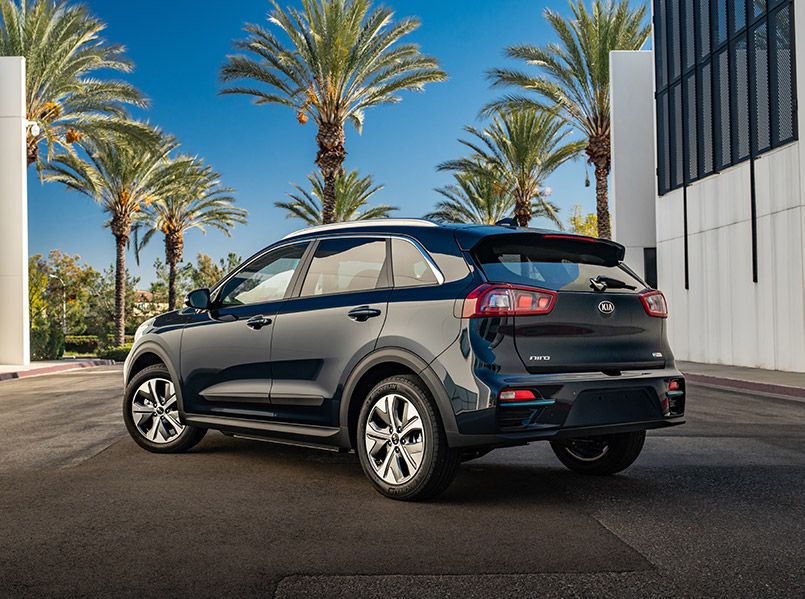
Photo by Kia
Interior
The Niro EV’s interior is another indication that Kia product planners expect a mainstream buyer for the vehicle. Rather than trying to wow you with futuristic sweeps and curves, the Niro EV has an interior that would seem at home in any well-designed mid-priced car. The materials aren’t especially luxurious, but the design is clean, straightforward, and usable.
At the wheel of a Niro EV, you immediately sense where important controls are and how to use them. The infotainment screen sits in the middle of the dashboard, and right below it are well-labeled buttons and knobs that help control the system. Separate controls for heating and air conditioning are also well-placed in the center stack. The shifter is simplicity personified — a giant dial enabling you to choose reverse, neutral, or forward, with a push-button in the center to select park. The instrument cluster is clear and nicely integrates information about state-of-charge and range. The Niro EV-only seat upholstery has (you guessed it) blue highlights.
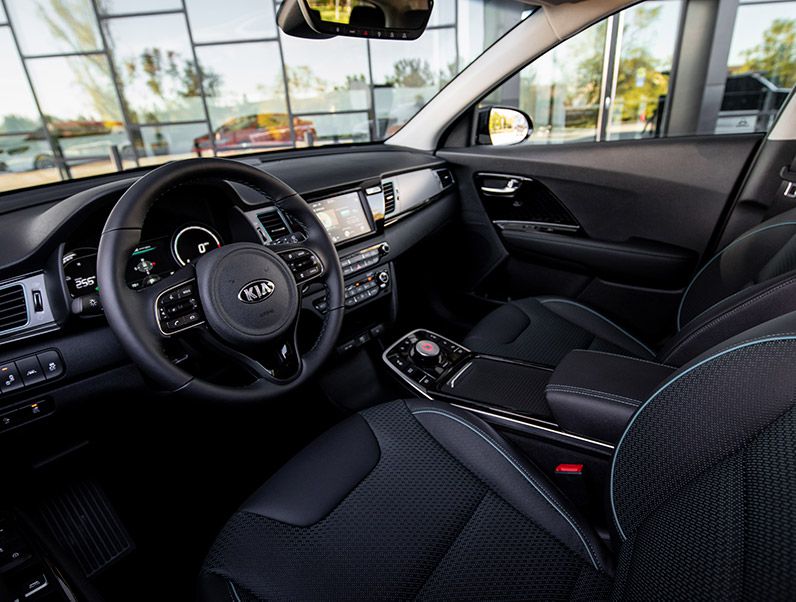
Photo by Kia
Infotainment
One of the reasons Kia scores so well on the J.D. Power Initial Quality Study is that its infotainment systems are straightforward and intuitive to operate. We wish the systems from other automakers were as easy. The key interface in the Niro EV is a 7-inch touchscreen, accompanied by dedicated buttons and knobs to control standard functions. The sound system has four speakers and two tweeters. The Niro EV’s UVO telematics system allows owners to monitor a long list of EV operations including battery and charging status, real-time charging station updates, and scheduled charging. Owners can plan a road trip with waypoints remotely and send it to the vehicle’s navigation system.
The infotainment system offers Android Auto and Apple CarPlay smartphone integration and Bluetooth plus AM/FM/MP3/SiriusXM audio. The Bluetooth system has a voice recognition feature, and the Niro EV also offers standard wireless smartphone charging. Auxiliary and USB input jacks are standard across all Niros. The Premium EX is equipped with an 8-inch color navigation touchscreen infotainment system and eight-speaker Harman Kardon premium audio.
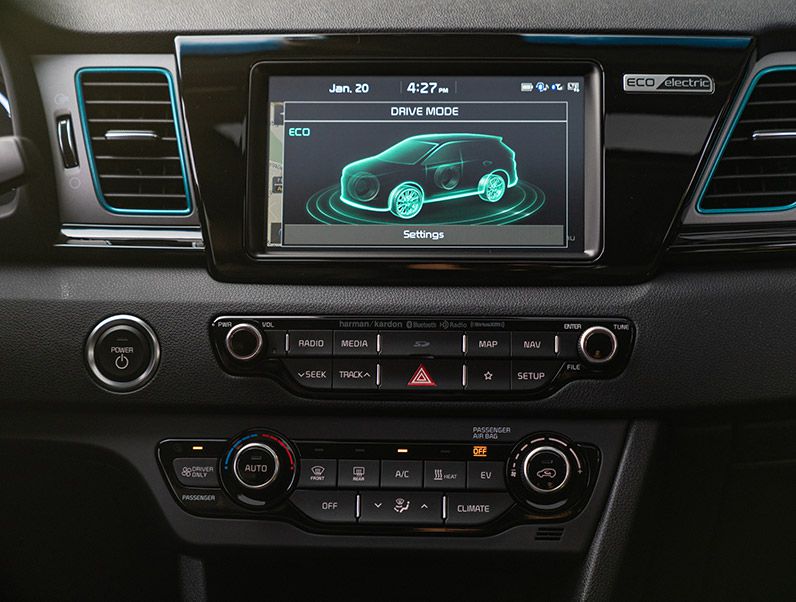
Photo by Kia
Powertrain
The Niro EV is significantly more sprightly than the hybrid version since it offers 201 horsepower versus the hybrid’s 139 horsepower (the combination of the hybrid’s electric motor and its 104-horsepower internal combustion engine). The EV's liquid-cooled 64-kWh lithium-ion polymer battery is housed under the floor of the vehicle for minimal passenger-space intrusion, also contributing to a lower center of gravity.
Fast-charging rates are brief, so even extended road trips can continue after relatively short charging intervals. The battery pack is rated to charge at 100 kW. Combined Charging System (CCS) DC fast-charge is standard equipment, enabling the Niro EV to get a 100-mile recharge in 30 minutes. It can be recharged to 80 percent total battery capacity in 75 minutes. With a 240-volt system, the 7.2-kWh charger requires approximately 9.5 hours for a full charge. Again, EPA estimates that range with a full charge is 239 miles.
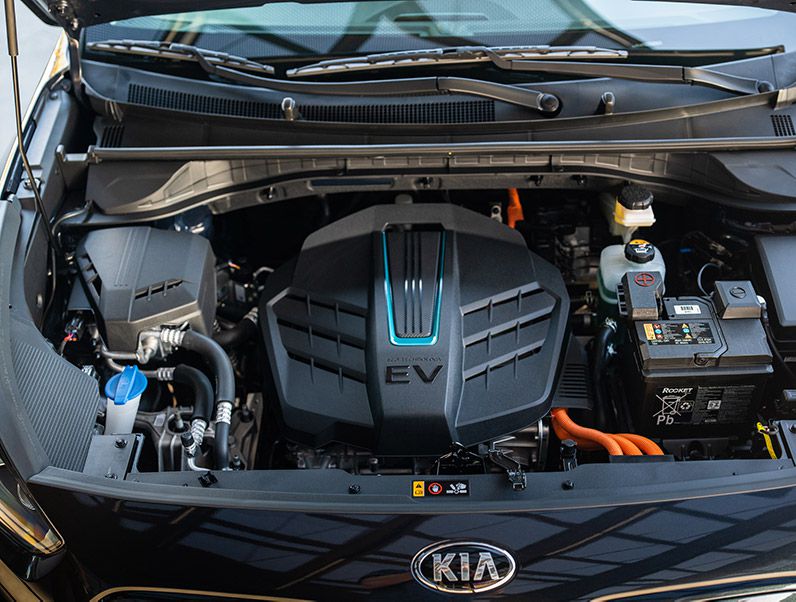
Photo by Kia
Cargo and Towing
When it comes to cargo-carrying ability, the Niro EV gives up very little to the Niro hybrid despite its larger battery. It offers 18.5 cubic feet of cargo space with both rows of seats in use, and 53 cubic feet with the backseat folded. In comparison, the Niro hybrid offers 19.4 cubic feet with the second-row bench seat in use and 54.5 cubic feet with the second-row seatback folded.
Of course, Niros can also accept a variety of carriers on their standard roof rails, but it should be noted that crossbars for the rails are optional. The under-floor position of the battery pack doesn’t impede cargo-carrying, and the Niro offers a low lift-up height for loading. Towing is not recommended for any of the Niros.
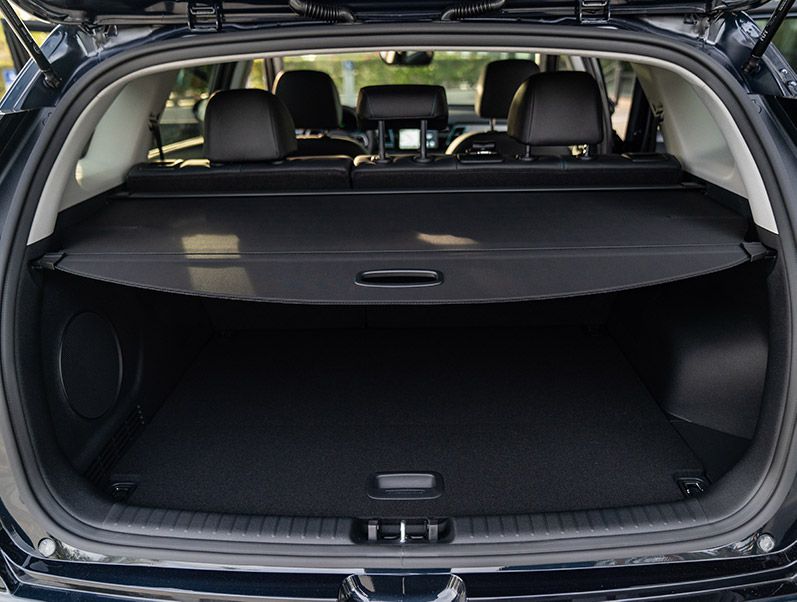
Photo by Kia
Safety and Driver Aids
The Kia Niro EV offers “Kia Drive Wise” advanced driver-assistance systems. Included are a forward collision warning, forward collision avoidance assist, a lane-departure warning, a lane-keeping system with a driver attention alert, adaptive cruise control, a driver-attention warning, and a rear cross-traffic alert. Other electronic driving aids include a rearview camera with dynamic guidelines, blind-spot monitoring, and selectable driving modes.
The four drive modes — Eco, Normal, Sport, and Eco+ — adjust the car's regenerative braking, air conditioning and heating, and speed to help manage operating efficiency. “Smart” regenerative braking operated via paddle shifters gives drivers the ability to slow the car and deliver captured energy to the battery to add range. Drivers can choose from four regeneration braking levels depending on how aggressive they want the effort to be.
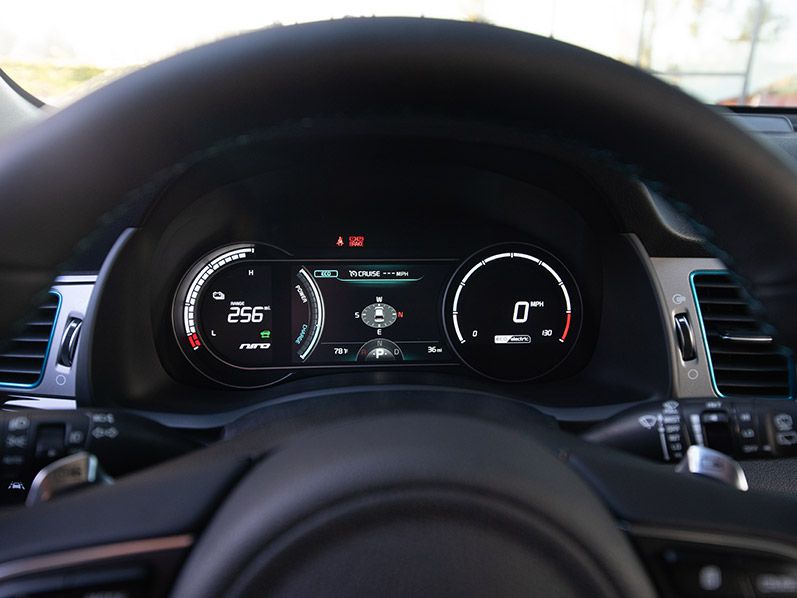
Photo by Kia
Driving Impressions
Driving the Niro EV has some videogame aspects to it. If you’d like it to, it will operate very much like a conventional internal combustion engine car. The major difference is its smooth and quiet application of power. It also emits a strange sound — Kia describes it as a “fantastic techy whirring noise” — when underway. The sound isn’t produced by the driveline or the tires; instead, it comes from the pedestrian warning system: a speaker and controller mounted behind the front bumper. Without it, the Niro EV would be silent, a potential hazard to those afoot.
In addition, the driver can bring the Niro EV to a full stop with the brake and hold function of the regeneration paddle shifter, but it takes some practice and concentration. Another vid-game aspect is the “Smart Regen” system that adjusts the regenerative braking level based on a vehicle in front of the Niro EV. At its best, it can create smoother coast-down driving, especially when descending a steep grade.
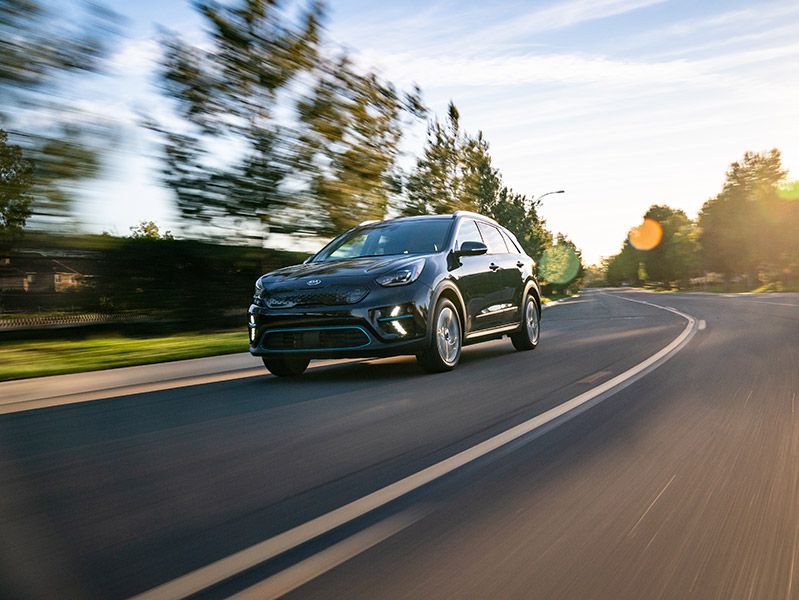
Photo by Kia
Trim Levels
The 2019 Kia Niro EV is available in two trim levels — EX and EX Premium. Both trims are well-equipped, but the EX Premium is certainly the more luxurious of the two. Its vast list of standard items includes the Harmon Kardon eight-speaker infotainment system with an 8-inch display, wireless phone charger, and a wide array of safety and driver-assist features. The EX Premium also includes leather seating, heated and ventilated front seats, and a 10-way adjustable driver’s seat with two-way power lumbar support.
While the EX Premium is very nearly an “all-in” version of the Niro EV, many buyers will find the EX an exceptional value. Functionally, it is the same vehicle as the EX Premium, and though it is not as chock full of convenience features as the upper-trim version, most will be well-satisfied with its level of equipment.

Photo by Kia
Pricing and Value
As with its hybrid and plug-in hybrid stablemates, the Kia Niro EV offers an impressive collection of style and technology in a very attractive package. As of this writing, the Niro EV is so new to the market that its prices have yet to be announced. Hints of the pricing come from the existing Niro models. The EX version of the plug-in hybrid Niro has an MSRP of $32,100, while the top-level EX Premium version has an MSRP of $35,200, plus a $995 destination charge.
Taking into account the federal income tax credit of $7,500 that accompanies the purchase of a Niro EV, we expect net purchase costs of Niro EVs to be between $30,000 and $35,000. Given the Niro EV’s expansive 230-plus-mile range on a charge and its overall versatility, we think it is a bargain.
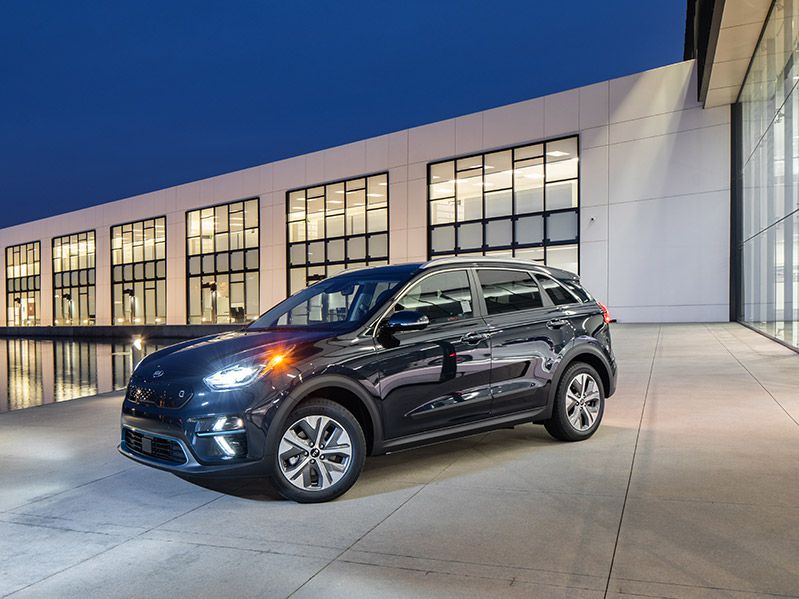
Photo by Kia